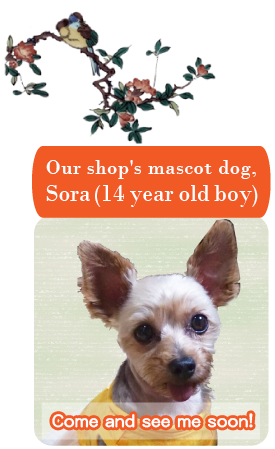The powerfulness of Kutaniyaki, attractiveness of the unique style
Ishikawa Prefecture's traditional craft, "Kutaniyaki" or "Kutani ware" is a style of Japanese porcelain.
Its biggest feature is in the beauty of the coloured painting decoration.
In the long history of Kutani, lasting about 350 years, various styles and painting methods were born.
It beauty not only attracts Japanese customers, but also the world, receiving high praise from the world as "Japan Kutani"
Kokutani Style
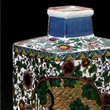
Daishoji clan commander Samurai of the Edo-period Ishikawa, Toshiharu Maeda,
ordered to bake in this style. Baked in Kutani village,
the style expresses the semiabstract design using the five colors of blue (green),
yellow, red, purple, prussian blue.
It was influenced by the Kano school, painted with lively and free lines, characterized by a bold design and exquisite colour scheme.
Mokubei Style
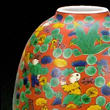
About 100 years after Kutaniyaki waste kiln, the Kasuga mountain kiln opens in Kanazawa at Kaga clan management.
A style in which Mokubei Aoki, literatologist painter, ordered to paint red to the front, and depicts Chinese characters and others in five colors
Yoshidaya Style
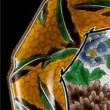
This style uses the kiln in which Yoshidaya Denemon aimed to use it at revitalizing Kutani. It is a style that followed the painting style of Aode Kutani.
The style mainly uses four colors, blue (green), yellow, purple, iron blue and various patterns and small patties, filling the whole surface characterized by a solid feeling style.
Iidaya Style
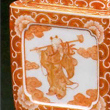
This style is done by baking in Miyamotoya kiln that took over the Yoshida ya iron pod.
It draws a person closely in red, filling the circumference with small stamps. It adds details using the gold color, and it is also called Hachiro-shu from the main worker Iidaya Hachiro.
Shouza Style
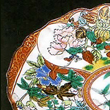
The fusion of all the methods of Kokutani, Yoshidaya, Iidaya, Kanzaki and the style of coloring in gold founded by Shozo Kutani.
After the Meiji era, this style became the mainstream of the Kutani style and is regarded as the "Japan Kutani".
Eiraku Style
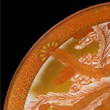
Style burned in the Kutani main kiln where the Daisho clan of the Kaga clan branch opened.
It is a luxurious and sophisticated style of painting on the entire surface with red, painted with gold only on it.
Aochibu
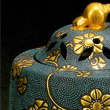
echnique spread in Taisho era. Above the ground color, a lump of fine green points called the 'blue grains' line up, and convey classiness. In order to make the size, color and interval of blue grains uniform, high skill is required. Besides blue grains, there are also white grains and gold grains.
Mori-etsuke
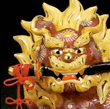
In 1924, Sakae Nishio introduced this style. A method that is common in ornaments such as lions and lucky cats (Maneki Neko).
It features a three-dimensional pattern created using specific paints which makes the product bold and exciting.
Saiyu
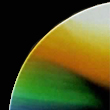
Using the glaze of blue (green), yellow, red, purple, iron and blue, it fills the whole vessel.
By overlaying two or more kind of glaze, you can enjoy the gradual color change, and an elegant and vivid picture is drawn.
Yuri-kinsai
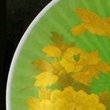
This style of painting bakes using gold powder and various forms of gold leaf with transparent glaze.
By using the glaze, it creates a soft, moist texture and it produce a fine sparkle on the surface.
Ginsai
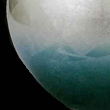
A technique of painting using transparent frosted glaze or five colored glaze on silver paste and baking it.
The foil does not peel off, and it has the property of not rusting. The tone of the soft picture and the textured feeling creates elegance to the painting.
Ishikawa Prefecture Kutaniyaki Museum (Kanazawa City)
It mainly exhibits works by local people.
The collection from the old Kutani style to the new style Kutani is exhibited, and a lot of masterpieces are a must-see.
Nomi City Kutaniyaki Museum (Nomi City)
In addition to looking back on the history of Kutani ware, you can appreciate masterpieces of each era and modern Kutani ware.
In addition to permanent exhibitions, special exhibitions are held.








